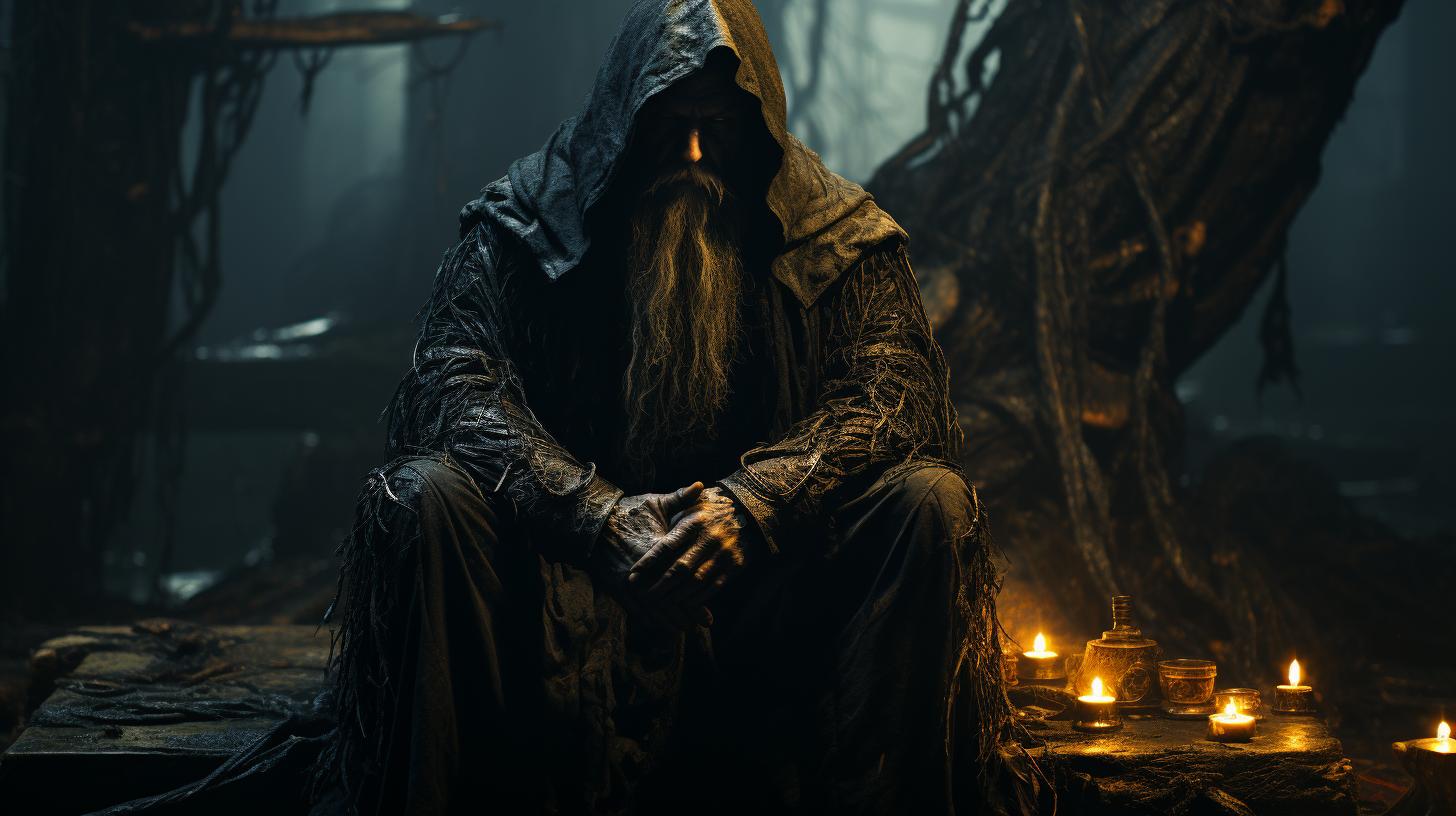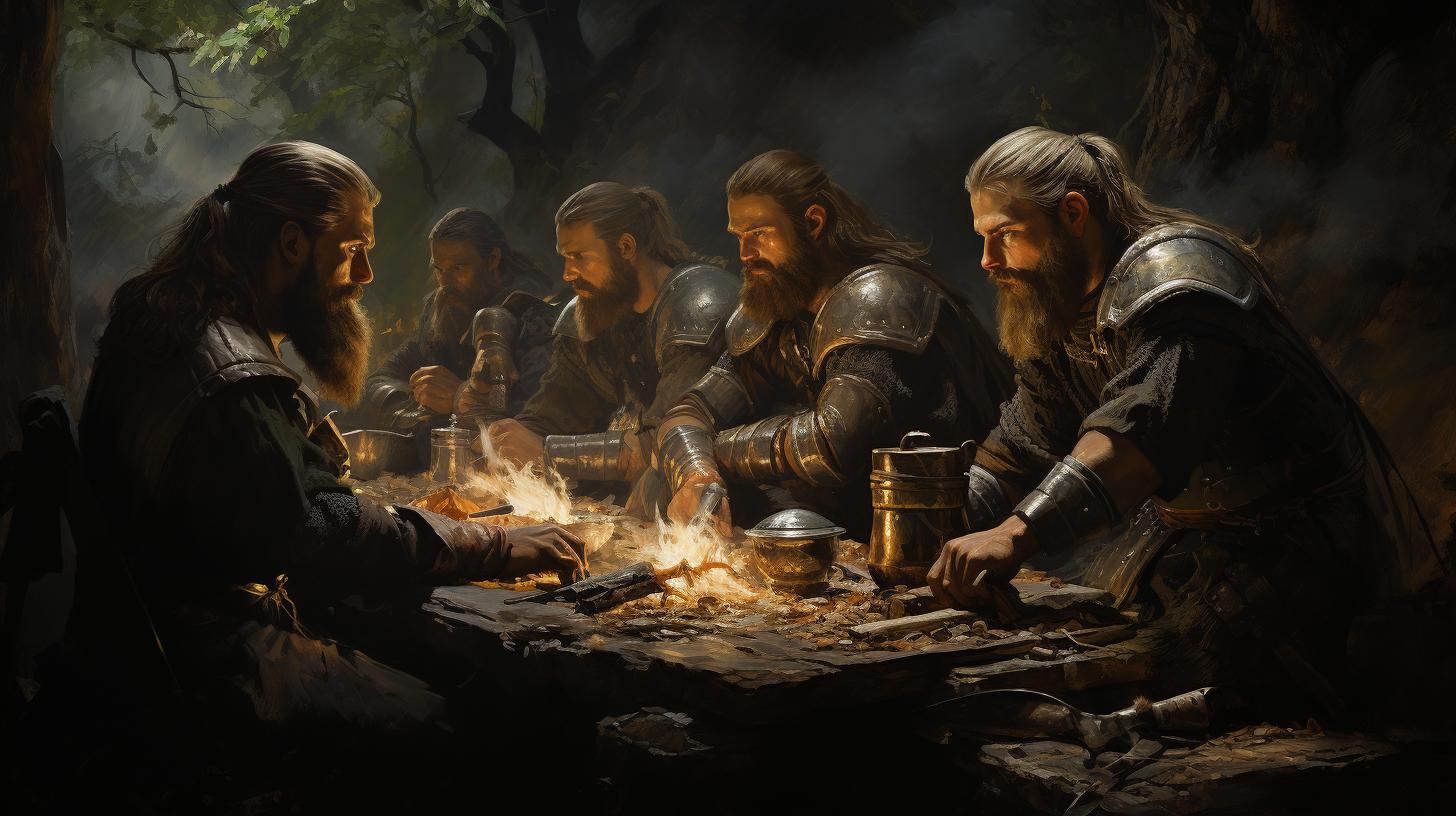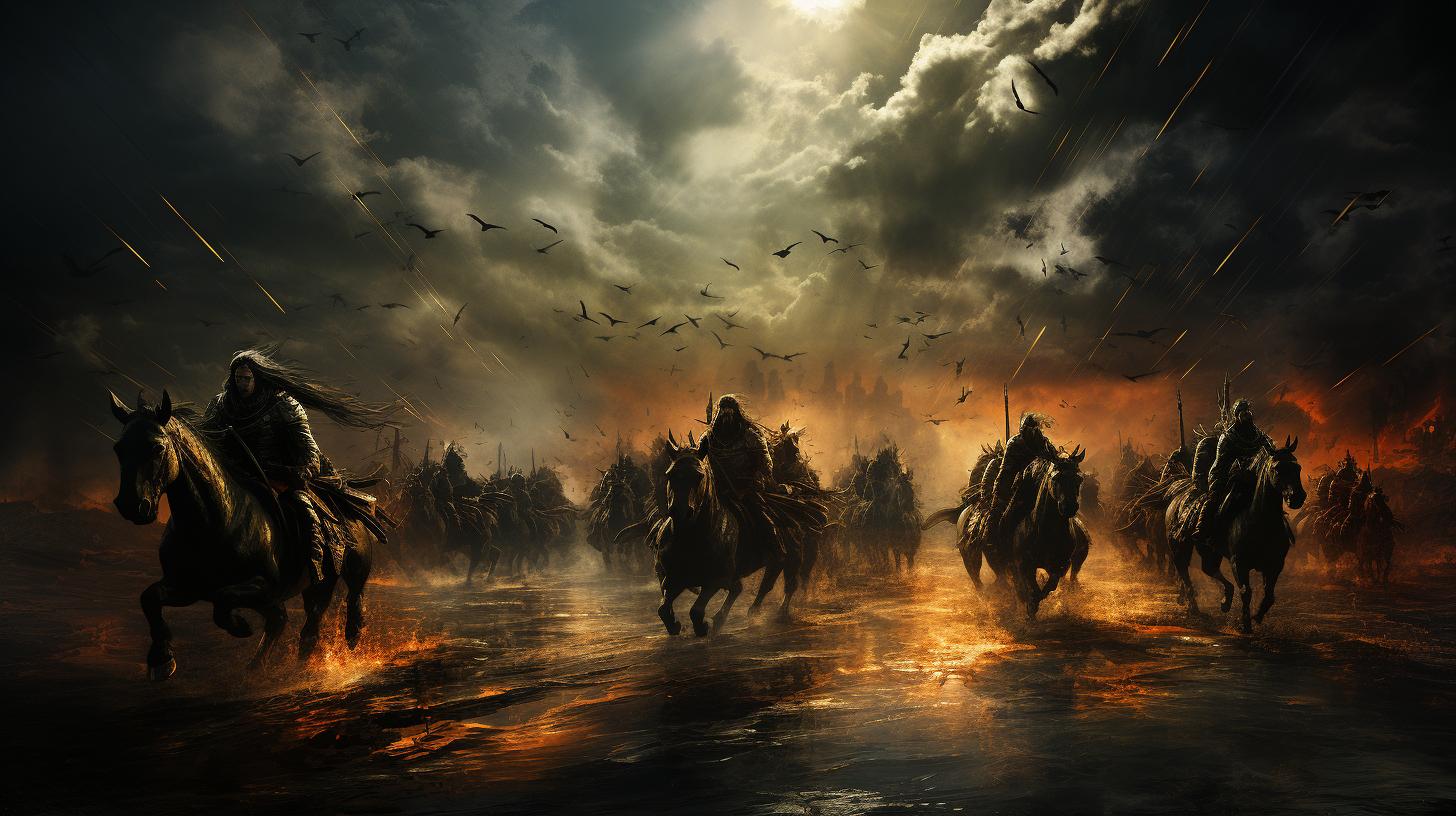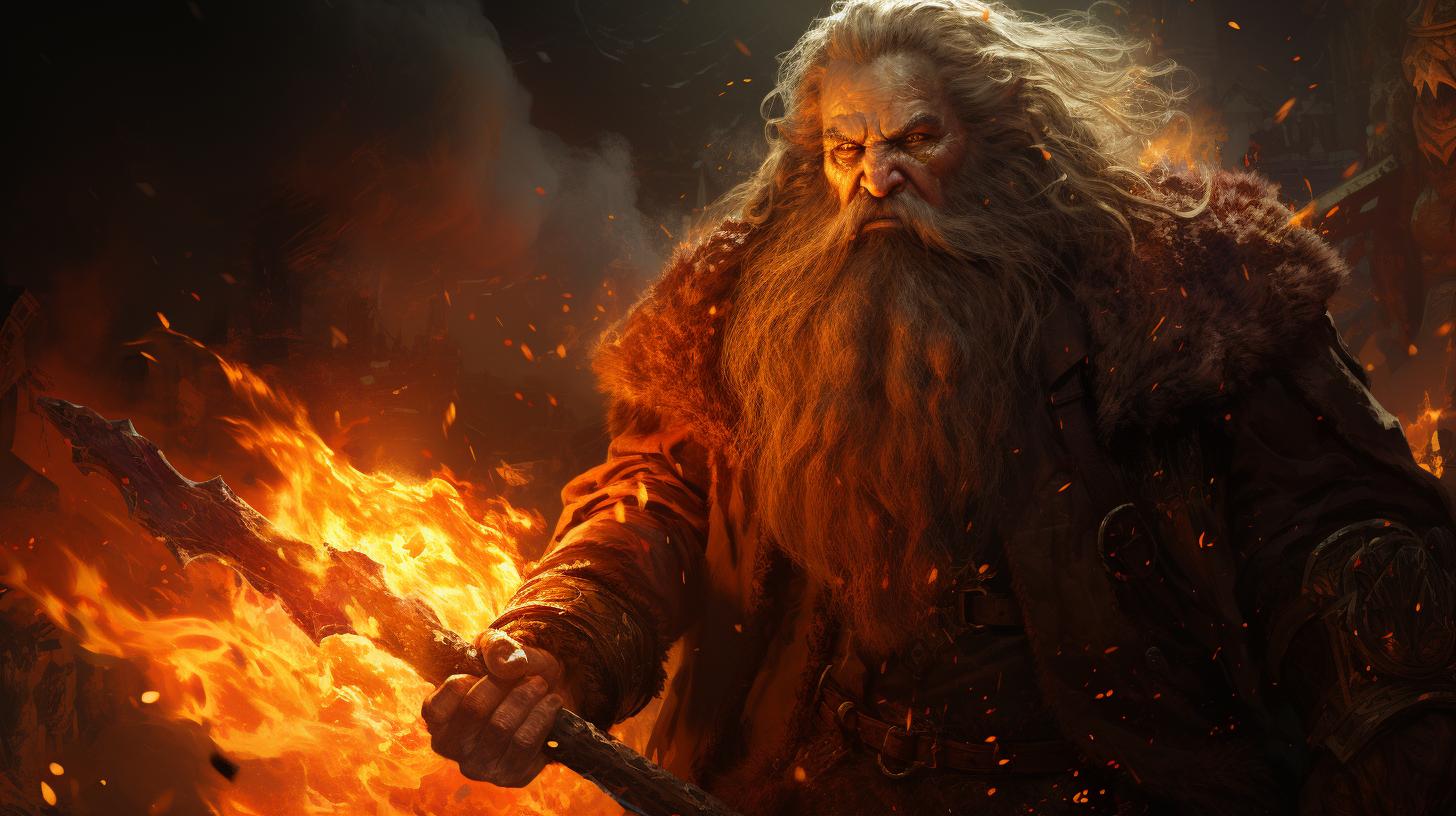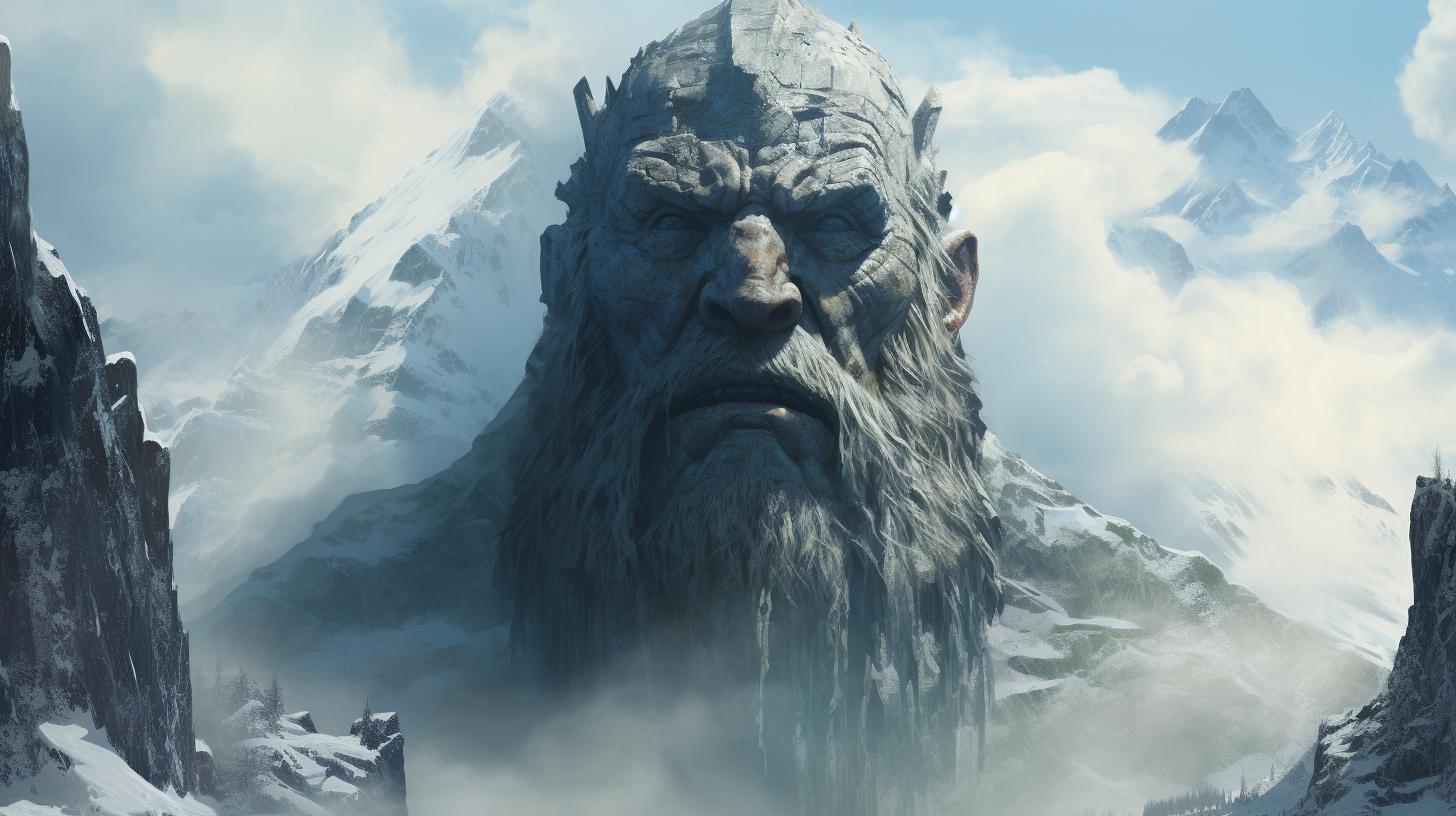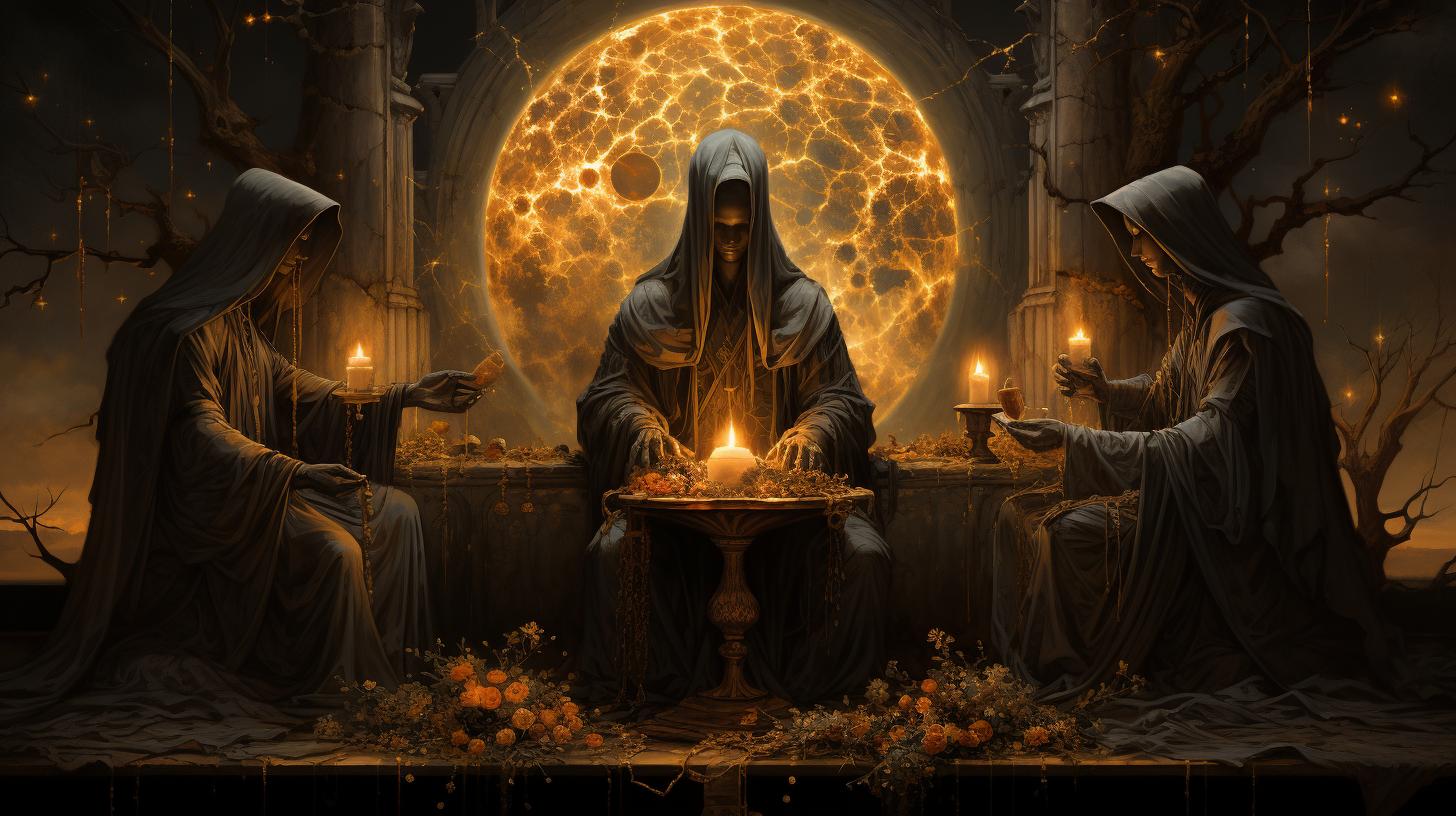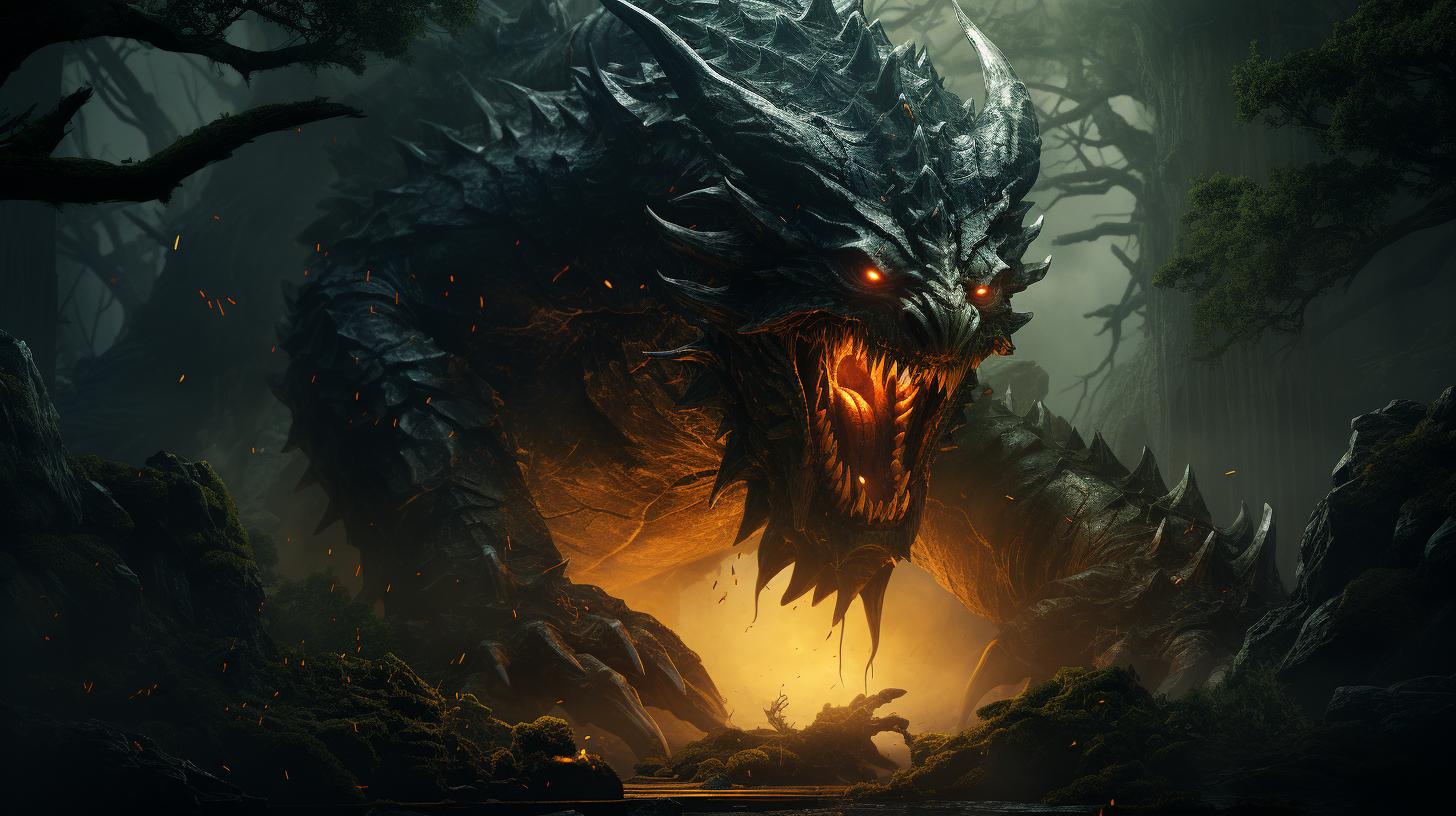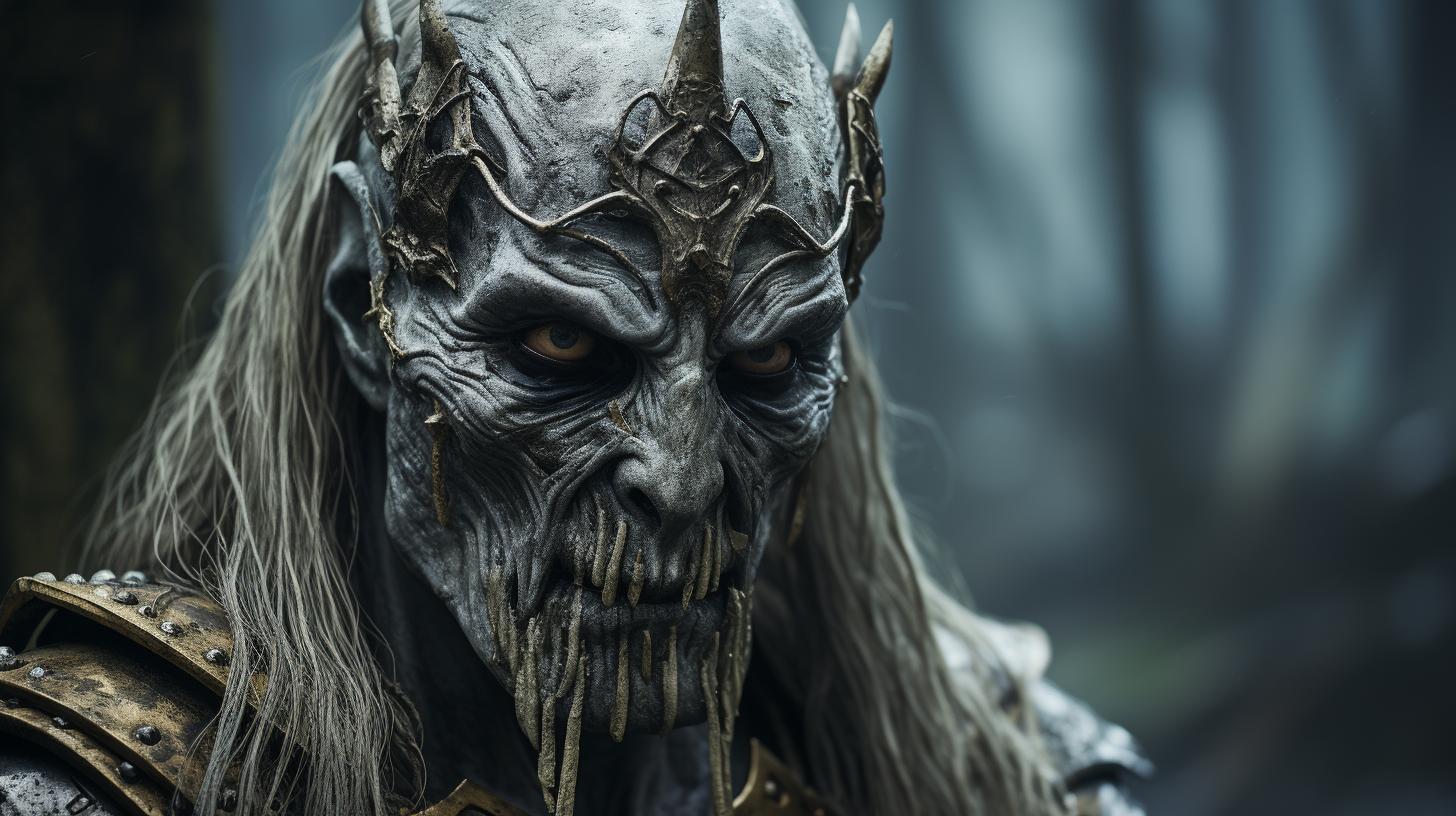Grimnir Norse Mythology: Unveiling the Secrets of Odin and Norse Deities

Grimnir Norse mythology explores the enigmatic figure of Grimnir, one of the many names of Odin in Norse mythology. This article delves into the origins of Grimnir, his significance in the poem Grímnismál, and his role in the captivating story of Hraudung, Agnar, and Geirrod.
We also examine the connections between Grimnir and other mythological figures like Czernobog and Gullveig, as well as his presence in popular culture, such as Warhammer Fantasy. Furthermore, we delve into the symbolism of masks and shapeshifting in Norse mythology, reflecting on Odin’s transformative nature.
The Origins of Grimnir in Norse Mythology
The Many Names of Odin
In Norse mythology, Odin is known for having many names, each reflecting a different aspect of his character and power. One of his significant names is Grimnir, which holds deep meaning and symbolism.
Understanding the various names attributed to Odin allows us to explore his multifaceted nature and role within the pantheon of Norse deities.
Unveiling the Mask: Grimnir, the Enigmatic God
Grimnir, often referred to as ‘the masked’ or ‘the enigmatic,’ is a significant aspect of Odin’s persona. This name highlights Odin’s connection to mystery, disguise, and the hidden realms of knowledge.
As Grimnir, Odin reveals a profound depth of wisdom and plays a pivotal role in the tales and legends of Norse mythology. Discovering the secrets behind Grimnir’s mask leads to a greater understanding of the complexities of Odin as a deity.
Grimnir in the Poem Grímnismál
The poem Grímnismál, also known as “The Sayings of Grimnir,” provides insight into the role and character of Grimnir within Norse mythology. It is a significant poem in the Poetic Edda, a collection of Old Norse poems that explores various mythological themes.
In Grímnismál, Grimnir appears as an old, wise deity disguised as a hooded wanderer. He visits the young Agnar and imparts his knowledge in a series of poetic verses. Through his words, Grimnir reveals the intricate details of the Norse cosmos, describing the different realms and the deities that inhabit them.
Grimnir elaborates on the nine worlds connected by the cosmic tree Yggdrasil, including the realms of gods, giants, and the afterlife. He speaks of Valhalla, the great hall of fallen warriors ruled by Odin, emphasizing the importance of bravery and honor in Norse culture.
Furthermore, Grimnir reveals the presence of mythical creatures like the Norns, who control destiny, and the mighty serpent Jormungandr, which encircles the world. He provides glimpses of the rich tapestry of Norse mythology, shedding light on the interconnectedness of the divine beings and their influence on mortal affairs.
The role of Grimnir in Grímnismál extends beyond a mere source of knowledge. Through his interaction with Agnar, Grimnir embodies the archetype of the wise wanderer who dispenses wisdom and guidance to those who seek it.
As the poem unfolds, Grimnir’s true identity is revealed to be Odin, the All-Father, ruler of the gods. This transformation signifies the transformative power and wisdom associated with Odin, who is known for his shapeshifting abilities and profound insights.
The inclusion of Grimnir in the Poem Grímnismál highlights the importance of Odin as a teacher and keeper of knowledge in Norse mythology. It underscores the multifaceted nature of Odin and his ability to assume different guises to impart wisdom and shape the destinies of mortals and gods alike.
The Story of Hraudung, Agnar, and Geirrod
The story of Hraudung, Agnar, and Geirrod is a captivating tale within Norse mythology that sheds light on the role of Grimnir, one of Odin’s many names. It delves into the tyrannical reign of Geirrod, who becomes a cruel king, and the intervention of Odin and Frigg in an attempt to bring balance and justice.
Geirrod’s Tyranny and the Role of Grimnir
Geirrod’s ascension to the throne plunges the kingdom into darkness as his tyranny and oppressive rule spread. Amidst this turmoil, Grimnir emerges as a pivotal figure, caught in the crossfire of Geirrod’s wrath.
Odin and Frigg’s Intervention
Worried about the fate of Agnar and Geirrod, Odin and Frigg discuss a solution to end the reign of terror. Frigg sends her messenger, Fulla, to warn Geirrod of a sorcerer’s plot to enchant him and advises him to be cautious.
Grimnir’s Revelation: Exploring the Realms of Norse Mythology
In an act of desperation, Geirrod subjects Grimnir to torture in the hope of extracting information. However, Grimnir reveals insights into the vast and intricate realms of Norse mythology, unfolding the secrets of the deities and their domains.
Through this captivating narrative, the story of Hraudung, Agnar, and Geirrod brings to light the profound role of Grimnir in Norse mythology, showcasing the complex web of relationships and the interplay between gods and mortals.
Connections to Other Mythological Figures
Czernobog in American Gods and his Relation to Grimnir
In the acclaimed novel “American Gods” by Neil Gaiman, Czernobog, a Slavic deity, is portrayed as one of the main characters. Interestingly, Czernobog’s character bears a connection to Grimnir in Norse mythology.
Both deities embody the darker aspects of divinity, representing the complexity of human nature and the duality of good and evil. While Czernobog originates from Slavic mythology and Grimnir from Norse mythology, their shared themes highlight the universal nature of mythological figures across cultures.
Gaiman’s narrative explores the collision of these mythological entities in a contemporary American setting, creating a fascinating interplay between gods of different pantheons.
Gullveig and the Role of Freya in Norse Mythology
In Norse mythology, Gullveig is an enigmatic figure associated with Seidr magic and her fate ties into the origins of war among the gods.
She prominently appears in the mythological narrative known as the “War of the Æsir and the Vanir.” Gullveig’s story intersects with Freya, the Norse goddess of love, beauty, and fertility.
Scholars believe that Gullveig may be an earlier version of Freya herself, both connected to themes of desire, transformation, and the revelatory powers of magic. Exploring the role of Gullveig sheds light on the complex dynamics within Norse mythology, specifically regarding the divine feminine and their significance in the pantheon.
- Grimnir and Czernobog share thematic similarities in “American Gods” by Neil Gaiman.
- Gullveig’s connection to Freya and their roles in Norse mythology.
Grimnir in Popular Culture
Grimnir, the enigmatic figure from Norse mythology, has found his way into various facets of popular culture. This section explores how Grimnir is depicted and represented in different mediums, showcasing his enduring presence and influence.
Grimnir in Warhammer Fantasy
In the rich fantasy universe of Warhammer, Grimnir is a prominent character. He is revered as the Dwarven god of warriors and often depicted as a formidable figure clad in ornate armor, wielding a mighty warhammer.
The tales surrounding Grimnir in this fictional world often emphasize his bravery, loyalty, and martial prowess. Players of the Warhammer Fantasy tabletop game and readers of its expansive lore will surely encounter Grimnir’s name and stories.
Grimnir in Literature for Young Adults
The captivating tales of Norse mythology, including the enigmatic Grimnir, have also made their way into literature for young adults. Authors and storytellers have drawn inspiration from Grimnir’s intriguing character, weaving his stories into engaging narratives for younger readers.
Through these books, young readers can delve into the ancient realms of Norse mythology and embark on thrilling adventures alongside Grimnir, unraveling the mysteries of the gods and the cosmos.
Exploring the Symbolism of Masks and Shapeshifting in Norse Mythology
Exploring the rich symbolism of masks and shapeshifting in Norse mythology provides a fascinating insight into the multifaceted nature of the deities, particularly Odin, the Masked Changer of Forms.
Odin, the Masked Changer of Forms
In Norse mythology, Odin is renowned for his ability to change shape and don different masks, emphasizing his complexity as a deity. Through shapeshifting, Odin reveals the fluidity of identity and the multitude of roles he assumes in the pantheon.
His masks allow him to embody different aspects and attributes, acting as a vehicle for his divine presence.
The Wisdom of Odin: Exploring Grimnir’s Masks Through Art
Delving deeper into the symbolism of masks associated with Grimnir, we uncover the profound wisdom inherent in their use. Artists have been captivated by the concept of masks and have sought to express their interpretations through various artistic mediums.
- Paintings: Artists have created compelling visual representations that portray the enigmatic nature of Odin and Grimnir, capturing the mystique and hidden depths conveyed through masks.
- Sculptures: Three-dimensional sculptures bring the masks of Grimnir to life, inviting viewers to contemplate the intricate layers of identity and the transformative power they hold.
- Performances: The concept of masks is embodied in theatrical performances, where actors channel the essence of Grimnir through physical expression and symbolic representation.
The exploration of Grimnir’s masks through art serves as a powerful reminder of the enigmatic nature of Odin and the ever-changing personas he assumes within Norse mythology.
Through art, we gain a deeper appreciation for the profound wisdom and mystical allure of Grimnir and his masks.
Frequently Asked Questions about Grimnir and Norse Mythology
Here are some common questions and answers regarding Grimnir and Norse mythology:
Who is Grimnir in Norse Mythology?
Grimnir is one of the many names of the powerful god Odin in Norse mythology. It represents his enigmatic and mysterious nature, often referring to him as “the masked” or “the encapuchado.”
Grimnir plays a significant role in the mythology, symbolizing Odin’s wisdom and knowledge of the Nine Worlds.
What is the significance of Grimnir’s role in the story of Hraudung, Agnar, and Geirrod?
In the captivating tale of Hraudung, Agnar, and Geirrod, Grimnir’s role is crucial.
Geirrod, who becomes a tyrant king, captures Grimnir and subjects him to torture, hoping to extract valuable information. Grimnir reveals the secrets of the various realms and deities of Norse mythology, thereby highlighting the immense importance of his wisdom and divine knowledge.
How does Grimnir relate to other mythological figures like Czernobog and Gullveig?
Grimnir’s connections to other mythological figures contribute to the richness of Norse mythology. In American Gods, Czernobog shares similarities with Grimnir, representing a different perspective of the masked deity. On the other hand, Gullveig, associated with Freya, plays a vital role in the story of the Vanir-Aesir war, adding depth to Grimnir’s realm and interactions within the mythology.
What is the connection between Grimnir and Warhammer Fantasy?
Grimnir also finds a place in the popular tabletop game Warhammer Fantasy. Within this context, Grimnir is known as an exceptional Dwarf king, often associated with bravery and fighting prowess. The connection between Grimnir and Warhammer Fantasy expands Odin’s influence into different realms of fantasy and gaming.
How does Grimnir’s symbolism of masks and shapeshifting tie into Norse mythology?
Grimnir’s symbolism of masks and shapeshifting reflects Odin’s transformative nature. Odin, being a master of disguise, is known for assuming different identities and changing forms. This symbolism explores the masks we wear in society, both in how we present ourselves to others and the hidden layers we keep within.
It represents the complex and multifaceted nature of the divine and human existence.
.

